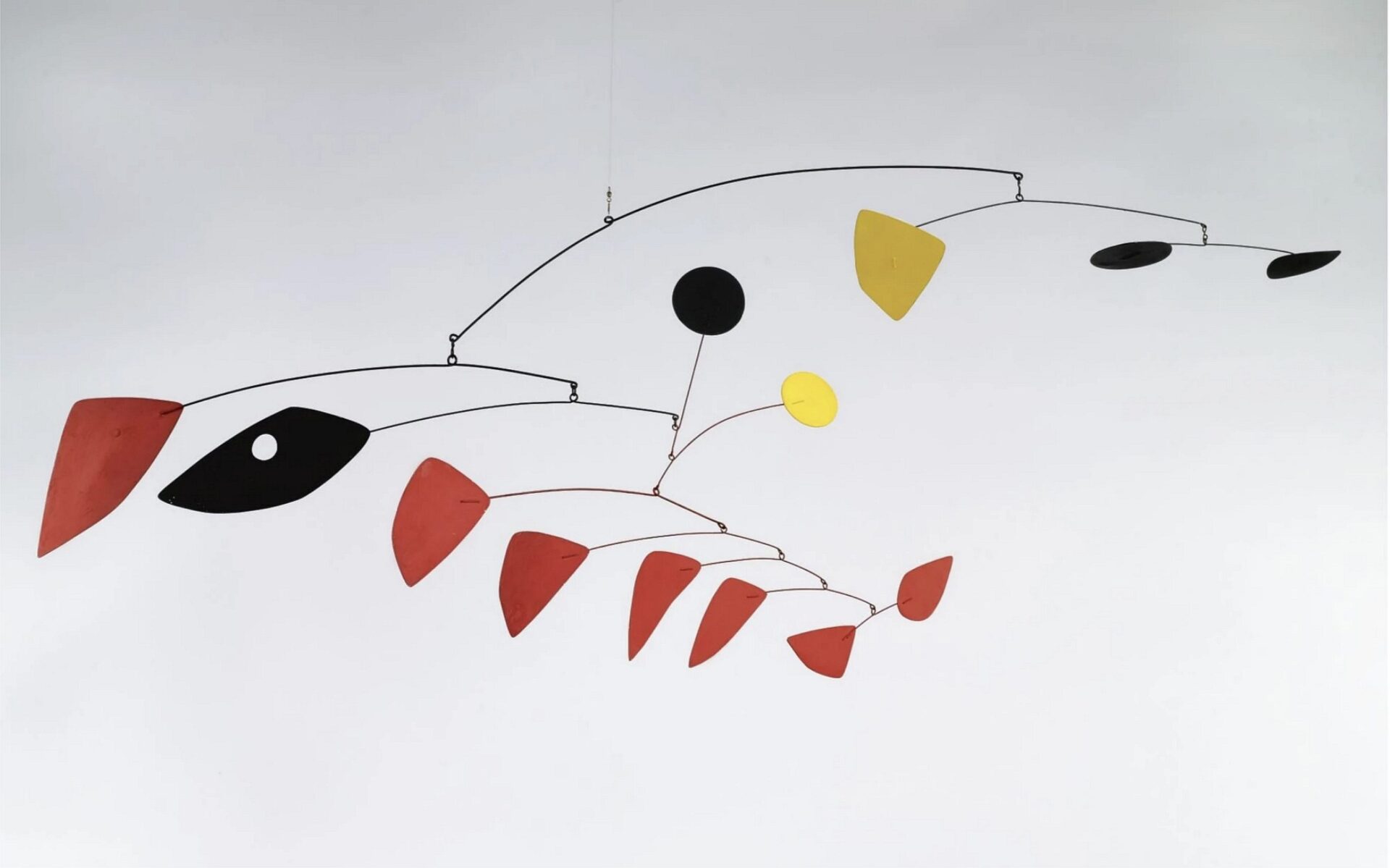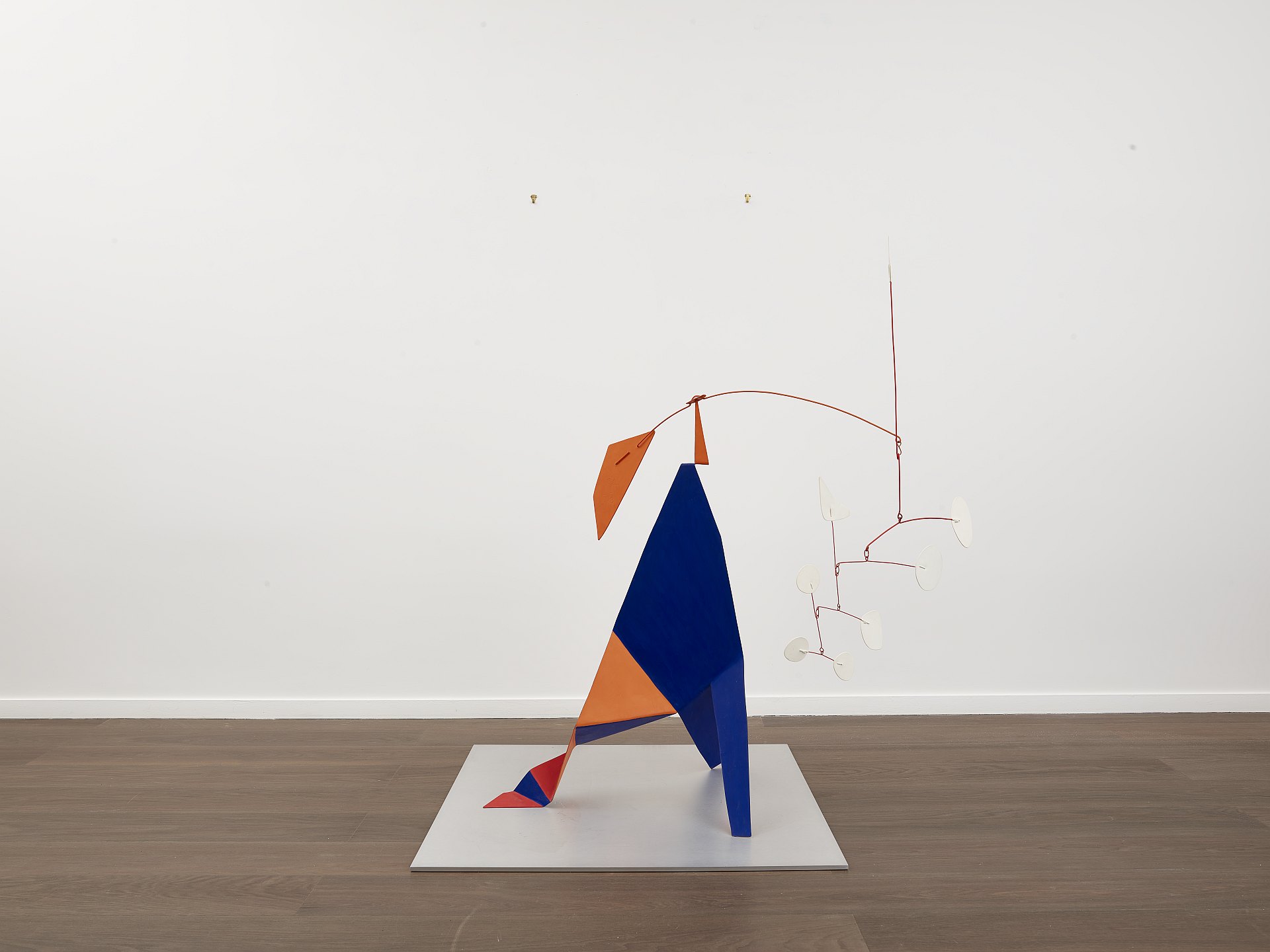Although his father was a sculptor and his mother a painter, Alexander Calder, a pioneer of kinetic art, initially studied mechanical engineering, until at the age of twenty-five he decided to begin his art studies.
In 1926 Calder moved to Paris, where he met important artists such as Fernand Léger, Marcel Duchamp and Joan Miró, with the last of whom he struck up a long and fruitful friendship. In 1930 he visited Piet Mondrian’s study. This totally changed his view of art and led him to abstraction. Indeed, during the two weeks following this visit he produced only abstract works. He was subsequently invited to join the Abstraction-Création group of artists, which included Jean Arp, Jean Hélion and Mondrian himself.
From then on, Calder’s work began to evolve towards abstract and kinetic art. In 1931 he created his first sculptures fitted with small electric motors, which Marcel Duchamp dubbed “mobiles”.
In 1937 he exhibited Mercury Fountain in the pavilion of the Spanish Republic at the World’s Fair in Paris, along with the work by his friend Joan Miró entitled Paysan catalan en révolte. The same space housed Guernica, which became a veritable symbol of the anti-fascist struggle.
In 1942 he started work on a series of wooden mobiles entitled Constellations, in homage to the works of the same name created by Miró and shown in the retrospective devoted to him by MoMA in New York in 1941. It had been curated by James Johnson Sweeney, who was also responsible for curating Calder’s own retrospective at MoMA in 1943.
In the 1950s Calder devoted himself to producing monumental sculptures, many of which were installed in public spaces. Such iconic locations as John F. Kennedy Airport in New York, the UNESCO headquarters in Paris and the Lincoln Center in New York contain large-scale works by this artist.
Alexander Calder died in New York in 1976, leaving an impressive artistic legacy which continues to be admired and studied today. His works can be found in the permanent collections of museums such as MoMA, the Centre Pompidou in Paris and the Guggenheim in New York, among many others.
The Hortensia Herrero collection holds two of Calder’s works: a mobile that hangs from the ceiling and a “standing mobile” that was included in the retrospective exhibition devoted to him by the Whitney Museum in New York in 1976.

